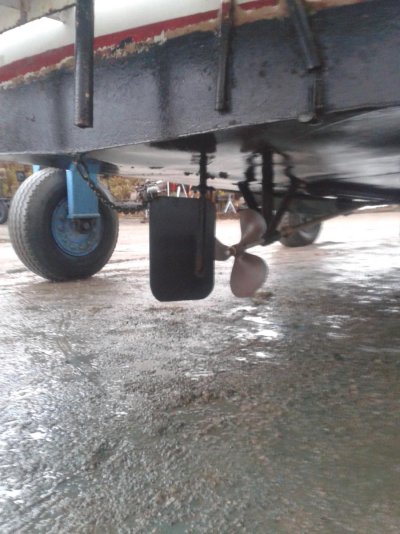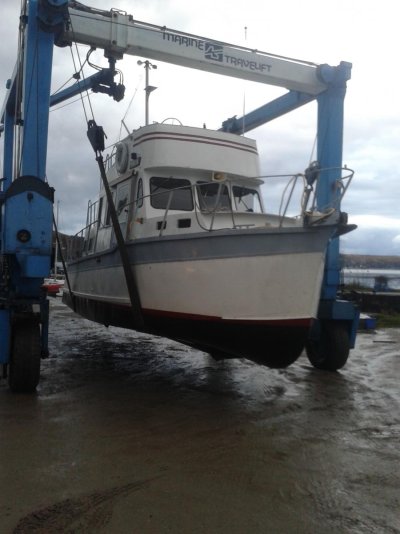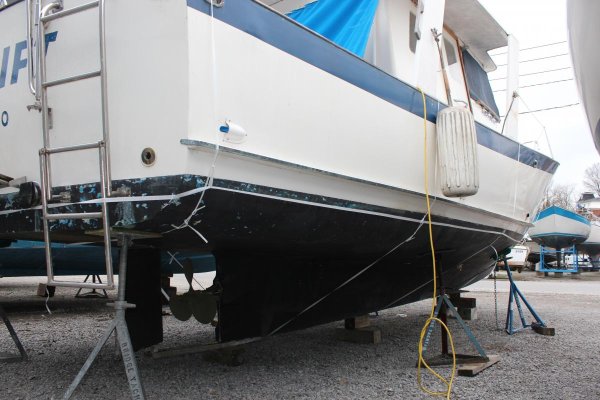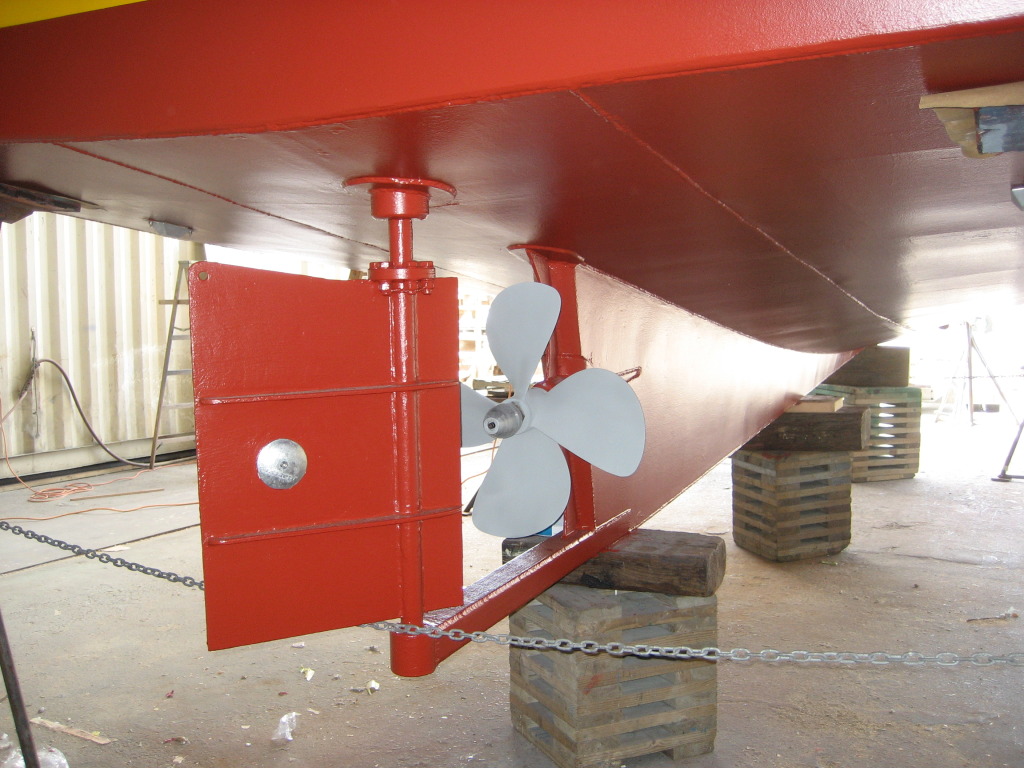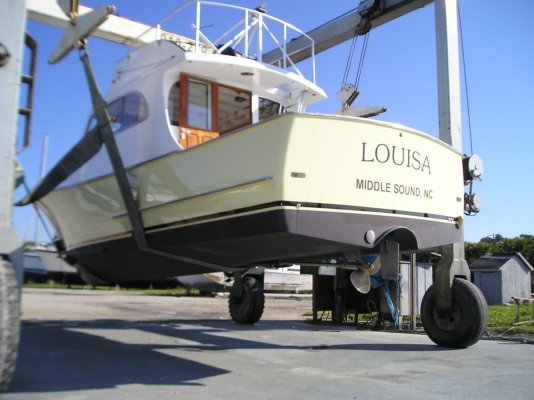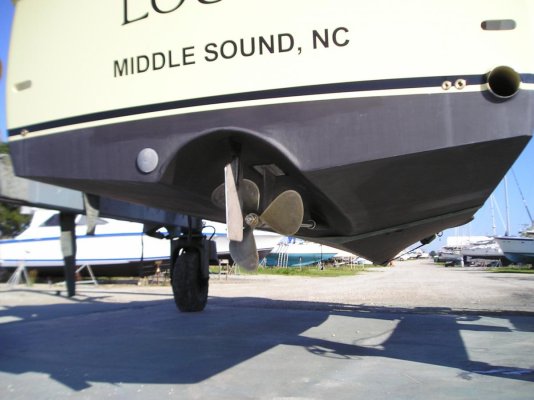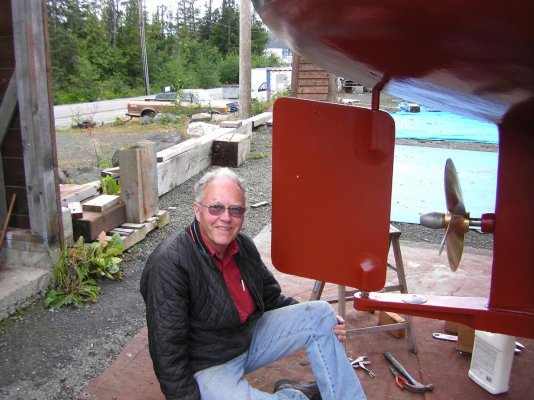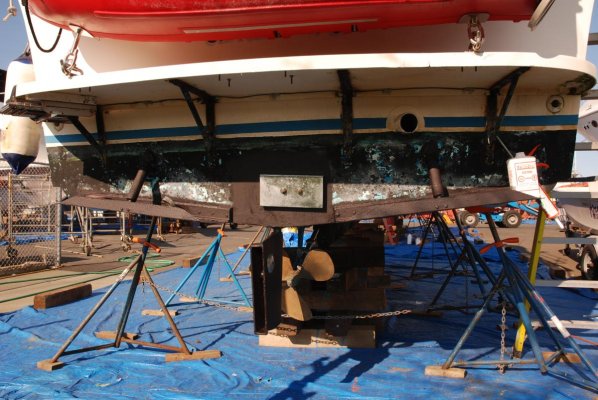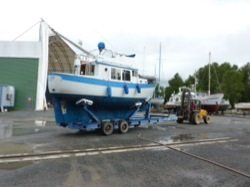dklortie
Newbie
- Joined
- Mar 22, 2014
- Messages
- 3
- Location
- Canada
- Vessel Name
- Wanderlust III
- Vessel Make
- Custom Steel Hull
Hi All,
This is my first post to the forum, so please forgive me if this is placed in the wrong location.
Last fall my wife and I traded in out planing hull for a 40 year old 32' home built steel hull trawler which we are currently in the process of restoring. The boat is powered by a Perkins 4.270 (60hp) single diesel.
The problem that I am having trouble with is the size of the rudder. A few years back the boat fell off the craddle and damaged the keel. The second owner (never had in the water we are the third owner). In his wisdom, he cut off the keel just past mid ships and removed the keel height rudder (Approx. 3' high and 3' long flat plate secured with a shaft at top and on the keel). This was replaced by a SMALL rudder (approx 1.75' x 1.25' in size). While this is suitable for steering the boat at 6knots, it is not suitable for getting into and out of the dock. The person we got the boat from said that was the size the rudder should have been in the first place. He is used to twin engine trawlers and tugs.
When coming into the dock, I need to be able to manouver much better! Just in gear is 4 knots, and at 15000 pounds, coming in at 4 knots is really not a good idea. At slow speed there might as well not be a rudder on the bottom of the boat as it does nothing, even at hard over! Unless I apply power, which as I had stated before must be done in moderation. I can currently turn a harder circle in reverse than in forward with the prop walk. Problem is the prop walk is to starboard and the dock that I have to come into is a turn to starboard with the dock to port.
Eventually (hopefully next year as it's out of the budget for this summer), I would like to have the keel extended back to the stern again for prop protection and better handling. I am trying to find a solution to the handling for this year that can also lend itself to being adapted into the full keel configuration with a shoe on the keel for the rudder at that time.
What I am wondering is how big of a rudder I really should have on the boat, and also how big I can go with just supporting the rudder from the shaft on the top for this year? I understand that the larger the rudder the more forces that are acting on it, and the last thing that I want to do is to turn the wheel hard over and snap the shaft all together.
I have attached a couple of photos of the boat and also the offending tiny rudder.
I am new to trawlers, but grew up sailing so displacement hulls are in my blood, and I know that sailboats have BIG rudders for their slow speeds.
Thanks in advance.
This is my first post to the forum, so please forgive me if this is placed in the wrong location.
Last fall my wife and I traded in out planing hull for a 40 year old 32' home built steel hull trawler which we are currently in the process of restoring. The boat is powered by a Perkins 4.270 (60hp) single diesel.
The problem that I am having trouble with is the size of the rudder. A few years back the boat fell off the craddle and damaged the keel. The second owner (never had in the water we are the third owner). In his wisdom, he cut off the keel just past mid ships and removed the keel height rudder (Approx. 3' high and 3' long flat plate secured with a shaft at top and on the keel). This was replaced by a SMALL rudder (approx 1.75' x 1.25' in size). While this is suitable for steering the boat at 6knots, it is not suitable for getting into and out of the dock. The person we got the boat from said that was the size the rudder should have been in the first place. He is used to twin engine trawlers and tugs.
When coming into the dock, I need to be able to manouver much better! Just in gear is 4 knots, and at 15000 pounds, coming in at 4 knots is really not a good idea. At slow speed there might as well not be a rudder on the bottom of the boat as it does nothing, even at hard over! Unless I apply power, which as I had stated before must be done in moderation. I can currently turn a harder circle in reverse than in forward with the prop walk. Problem is the prop walk is to starboard and the dock that I have to come into is a turn to starboard with the dock to port.
Eventually (hopefully next year as it's out of the budget for this summer), I would like to have the keel extended back to the stern again for prop protection and better handling. I am trying to find a solution to the handling for this year that can also lend itself to being adapted into the full keel configuration with a shoe on the keel for the rudder at that time.
What I am wondering is how big of a rudder I really should have on the boat, and also how big I can go with just supporting the rudder from the shaft on the top for this year? I understand that the larger the rudder the more forces that are acting on it, and the last thing that I want to do is to turn the wheel hard over and snap the shaft all together.
I have attached a couple of photos of the boat and also the offending tiny rudder.
I am new to trawlers, but grew up sailing so displacement hulls are in my blood, and I know that sailboats have BIG rudders for their slow speeds.
Thanks in advance.

